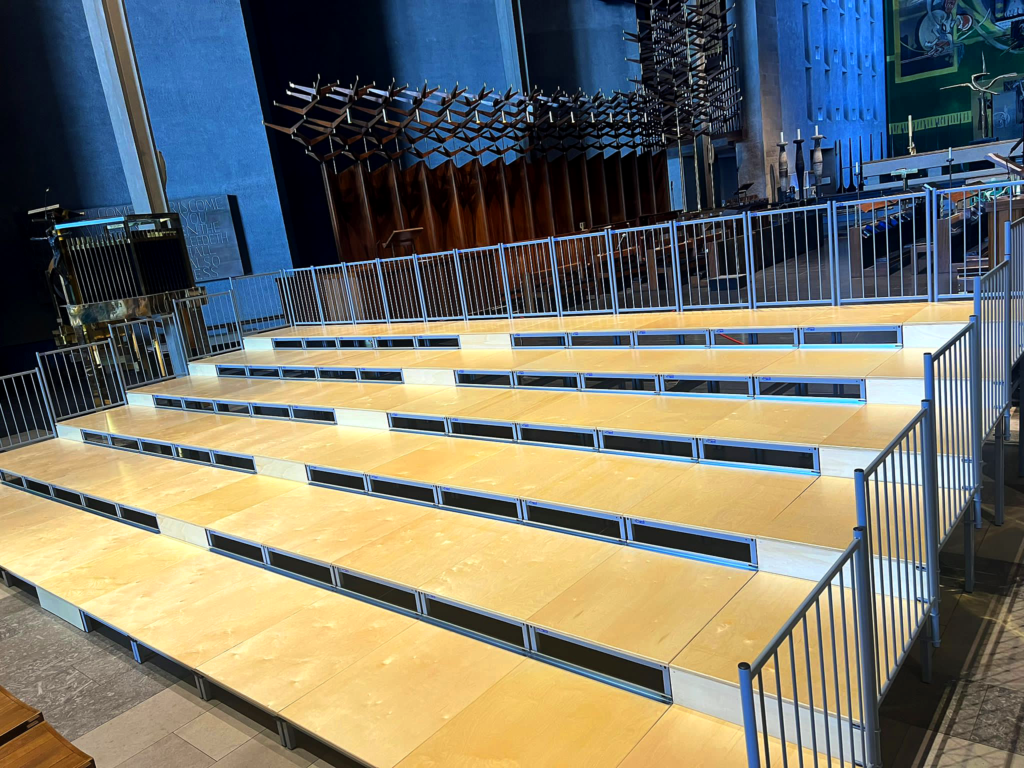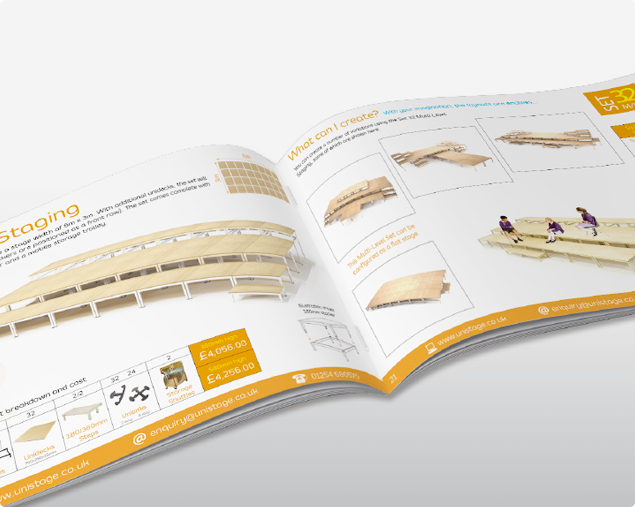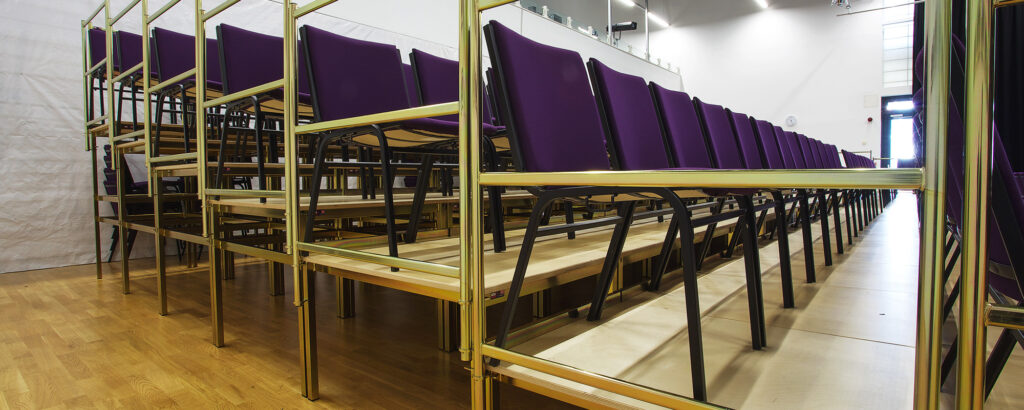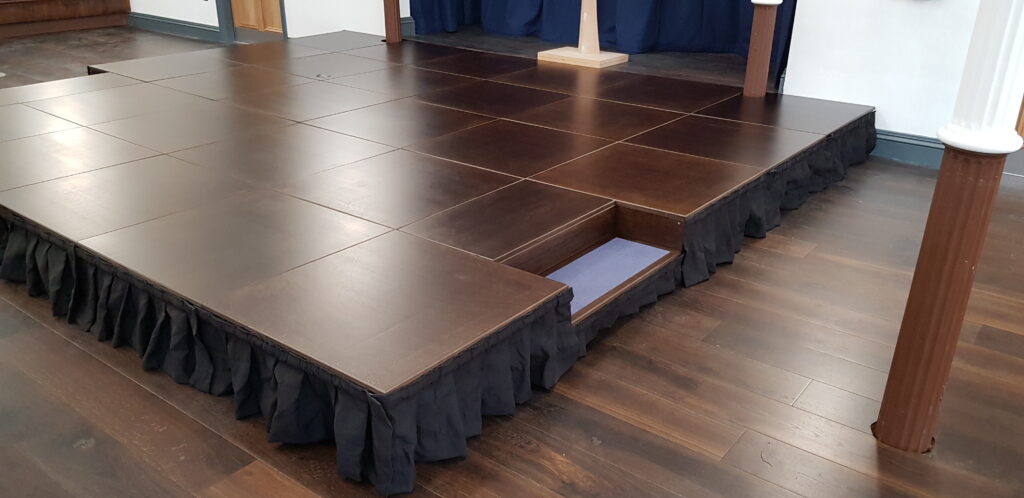free stage
design!
We create bespoke stage solutions
Looking for a custom stage? Speak to our team
The History Of The Stage – Part Two
1Mar, 2016
Previously, in Part 1 of this series tracking the history of the stage from its origins to the modern day, we examined how the stage first came to life in the depths of Ancient Greece.
In this post, we continue the journey of its evolution toward today’s modern portable staging systems by tracking its introduction in Rome and, courtesy of the Roman Empire, gradual progression across Europe towards the next great evolution in its storied history: Medieval England.
This is a History Of The Stage.
Part Two: The Gift Of The Roman Empire
In 270BC the predecessor of the Roman Empire- the Roman Republic- occupied several Greek territories for 20-30 years. It was in this time they were exposed to theatre and became enamoured enough with it to carry it with them back to their motherland.
Initial Roman theatre from 240BC onwards was virtually indistinguishable from that of its Greek counterpart, be it the plays and comedies performed, style of the acting or indeed design of the stages and theatres themselves.
What few additions the Romans did make to the original stage came in the form of the scaenae frons (pictured).
Typically more elaborate and expansive than its Greek brethren, the Roman equivalent of the Greek scena possessed more entries and exits to and from the stage, representing a plethora of additional rooms; in particular the hero’s house, a temple and… a brothel.
Particularly when the Roman Empire came into full swing in 27BC, Roman theatre took a turn for the glamorous, weaving in elements of the circus with grand, farcical costumes and masks to create a burlesque scene.
Jugglers, gymnasts, acrobats and gladiators became more of a feature, leading to performers taking their craft to the street. Merchants and urchins would busk on the streets of Rome for money and develop early forms of many of the crafts still practiced to this day.
Expansion Into Europe
The Roman Empire’s rapid two centuries of expansion into Europe across the birth of Christ saw battles, bloodshed and the introduction of the stage to the core European area which is now recognised as France, Germany, Spain, etc. Whilst theatre was adopted and replicated in these areas, it didn’t undergo any type of significant advancement.
That next major advancement to the stage would come when it reached the home of its most revered practitioners to date: England.
In 43AD, the (Western) Roman Empire first landed proper on the southern shores of England. They would occupy England south of Hadrian’s Wall for the best part of the next 400 years.
Meanwhile the Eastern, Byzantine division of the Roman Empire continued to hold sway across Greece, Turkey, the Yugoslavian states and the north borders of Africa well into the latter part of the millennium. In these states, early forms of mime and pantomime were developed.
The Empire began to fracture in the 4th century and was driven out of England for good in 410AD, however in that time the presence and appeal of theatre and the stage had made its resounding mark.
The Oppression Of The Church In Medieval England
However, with the collapse of the Roman Empire came unforeseen disarray and chaos. The Great Schism in the west divided Christianity into what would later evolve into the Catholic-Protestant dispute and with the rise of orthodox Christianity came a thorough condemnation and oppression of theatre. As it was seen as a product of Roman Catholicism and in direct opposition to the beliefs of the new religious west, independent performances of theatre were hounded into obscurity, with performers being branded as pagans and heretics for almost 500 years!
Equally at the same time, and in an example of sheer hypocrisy, the orthodox Christian church began to stage dramatisations of key scenes from the Bible, done to account for an almost exclusively illiterate audience.
It’s from these two performance brackets that the stage came to its next evolution. Christian plays were almost exclusively done in the church, whether on a proscenium platform or in free space in an early example of site-specific theatre.
Meanwhile, for the excommunicated and homeless Roman performers, many turned to performing in the streets, usually against the law. These performers were forced to adapt to whichever spaces they could find and could include stables, back alley public houses and inns.
Meanwhile, the privileged grew to house performances in their halls of residence, whether serious plays or more frequently the comedic performances of jesters. In addition, early incarnations of Theatre In The Round– centuries before it was recognised as such by name– were performed in amphitheatres uncovered in scarce expensive districts of major settlement areas.
The Advent Of The Pageant Wagon
As the Medieval years passed towards the close of the first millennium AD, driven by political and social changes of the time, religious theatre began to expand from within the churches to feature on the front steps and in surrounding courtyards.
Due to being outside, wooden backdrops began to be built to provide scenery for these performances. Over time, these wooden platforms and scenery morphed from static to mobile and as demand for theatre grew in the wake of bleak and dreary social times, the birth of the pageant wagon took place.
In the following years, pageant wagons became a tourable business and would utilise the whole city of choice as a backdrop for a string of continuous theatre at choice locations around it.
Pageant wagons would be set up along a predetermined route and move to perform scenes in one long chain. If one wagon was set up in front of a monument, public house or popular bridge, they would perform their one scene before moving on to the next determined location along the route and performing the scene again. Behind and in front of them, another wagon would perform a different scene from the same text, creating a moving circle of theatre around the city.
These wagons tended to be short, light and nimble, to ease their swift movement around the city. As such, they were often unsafe and required constant maintenance to remain in decent condition. As the movement grew and became very popular across Europe, these spectacles could become extremely large and touring season would feature entire cities out in arms to support the proceedings.
As liturgical (religious) drama became more popular and widespread in major metropolitan areas, demand increased and with an increase of any demand comes a more professional and structured supply.
By the late middle ages, performance in mainland Europe had expanded to include female performers and whilst that particular advancement was still some years away in England, it was there that theatre first became a profession, where performers were paid for their work.
The next huge development in theatre, performance and the stage would coincide with the recognised close of the middle ages. In the 1500s two things occurred which would radically alter the course of the stage’s history. These events would close the chapter on liturgical theatre and begin the transition into the theatre and stage’s most renowned period of prominence- the English Renaissance and Golden Age Spanish & Italian theatre.
How Religion Left The Stage
In 1529, King Henry VIII of England decreed the secession of the English church from Roman Catholicism. Whilst many in England tend to attribute the split in the church to Henry VIII, the reformation had in fact been occurring in mainland Europe for some years prior to Henry’s decree.
As theatre had become a staple of prior Catholicism, the reformation into the state-sponsored Church of England caused a strict restriction on liturgical theatre and in 1558, Henry VIII’s daughter and ultimate successor Elizabeth I banned all forms of religion-based theatre completely- a manoeuvre that was repeated in several countries across Europe.
In the huge void that was left following this, individual countries were left to their own devices with regards to providing for the huge demand for theatre. It is in this period of rapid identity discovery that theatre and the stage underwent a huge array of change.
Renaissance & Golden Age Theatre
William Shakespeare. Gil Vicente. Christopher Marlowe.
Just three of the names that featured in the next period of stage history. We will visit the realms of the Globe, de Vega’s exile and the English Civil War in our next stop along the road of the stage’s illustrious history…
… in PART THREE of A History of the Stage.
Recent Case Studies

Coventry Cathedral
Complete seated tiering installGrab a copy of our brochure

our free
brochure
Can we send you a design of how your stage may look?
Download a copy of free our most recent brochure for more information on our products and services. You will be able to browse stage options and accessories.



